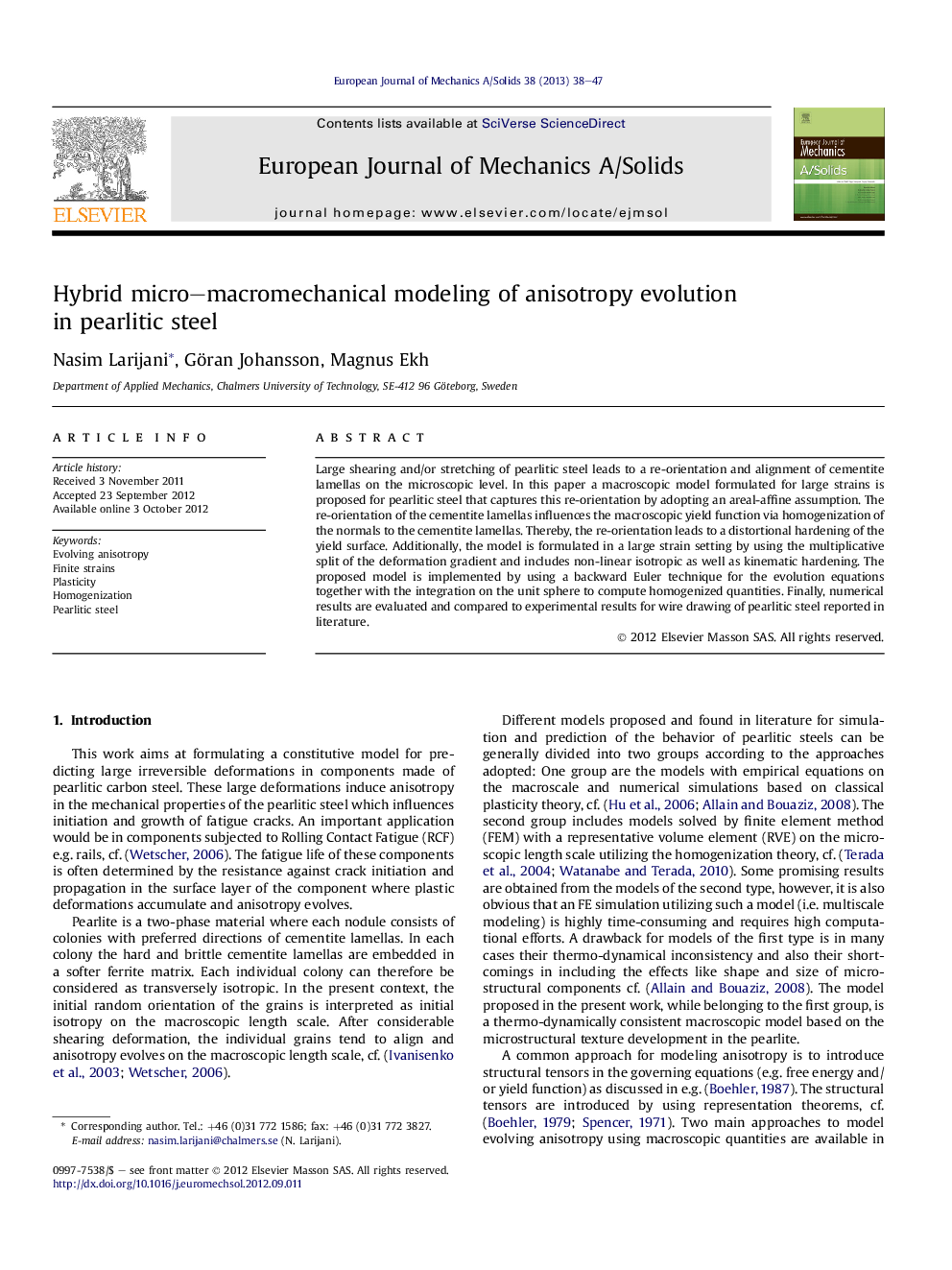| Article ID | Journal | Published Year | Pages | File Type |
|---|---|---|---|---|
| 774241 | European Journal of Mechanics - A/Solids | 2013 | 10 Pages |
Large shearing and/or stretching of pearlitic steel leads to a re-orientation and alignment of cementite lamellas on the microscopic level. In this paper a macroscopic model formulated for large strains is proposed for pearlitic steel that captures this re-orientation by adopting an areal-affine assumption. The re-orientation of the cementite lamellas influences the macroscopic yield function via homogenization of the normals to the cementite lamellas. Thereby, the re-orientation leads to a distortional hardening of the yield surface. Additionally, the model is formulated in a large strain setting by using the multiplicative split of the deformation gradient and includes non-linear isotropic as well as kinematic hardening. The proposed model is implemented by using a backward Euler technique for the evolution equations together with the integration on the unit sphere to compute homogenized quantities. Finally, numerical results are evaluated and compared to experimental results for wire drawing of pearlitic steel reported in literature.
► A micromechanical motivated model is proposed for large strains in pearlitic steel. ► The model includes the effect of evolution of anisotropy in pearlitic structures. ► Transition from micro- to macroscale is carried out via integration on unit sphere. ► The model captures reorientation of cementite lamellas by areal-affine assumption. ► Reorientation of lamellas leads to distortional hardening of yield surface.
